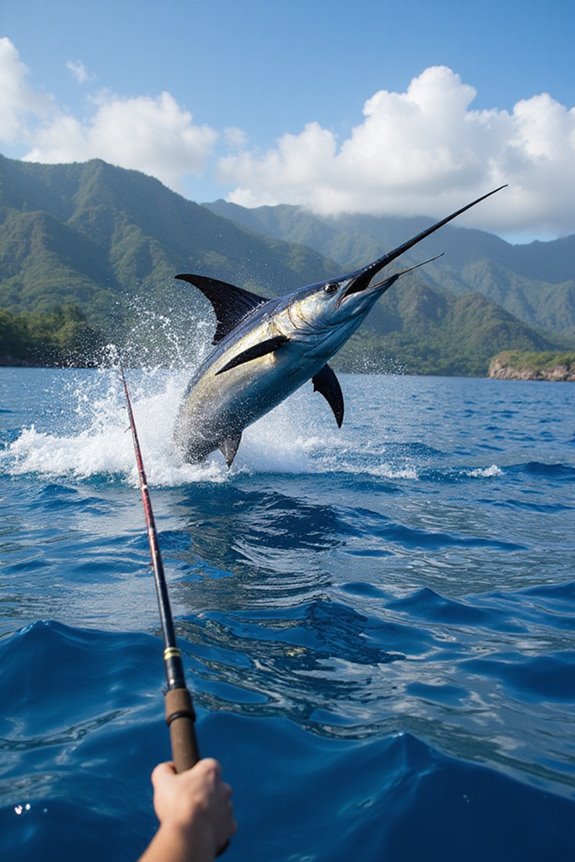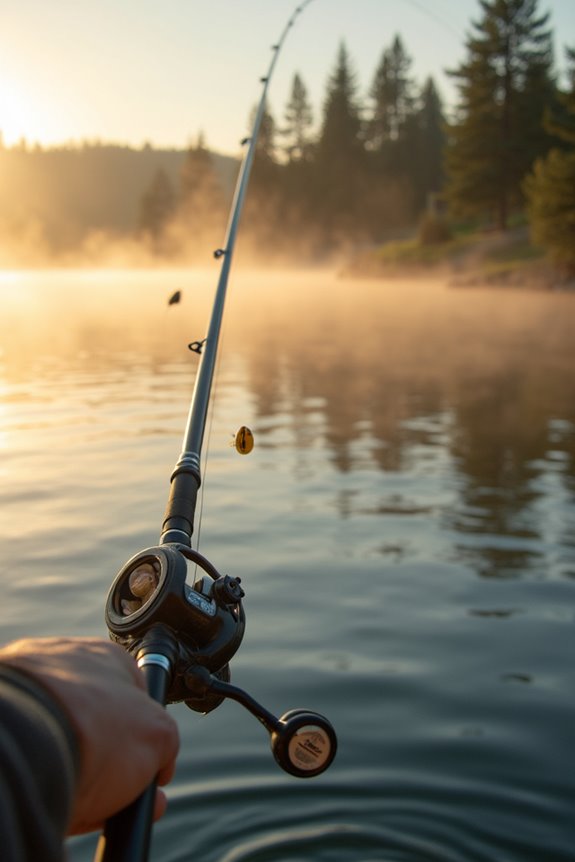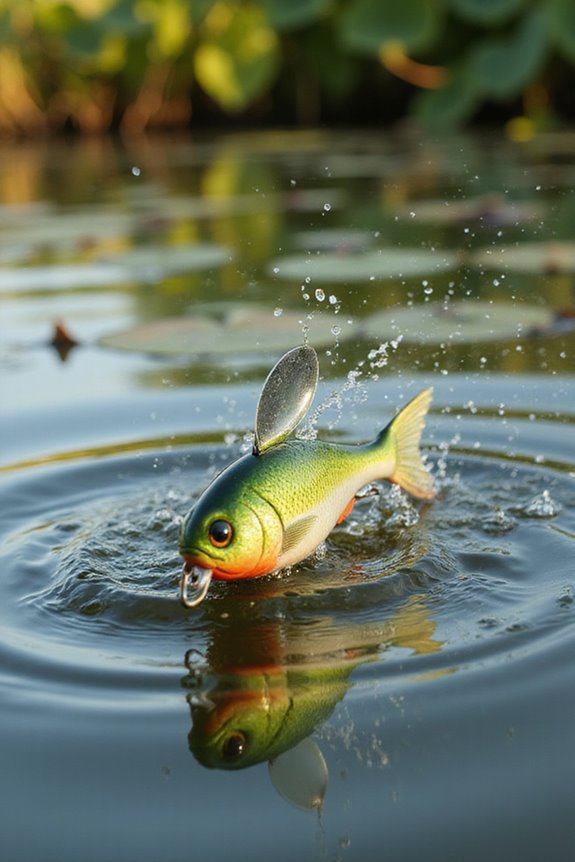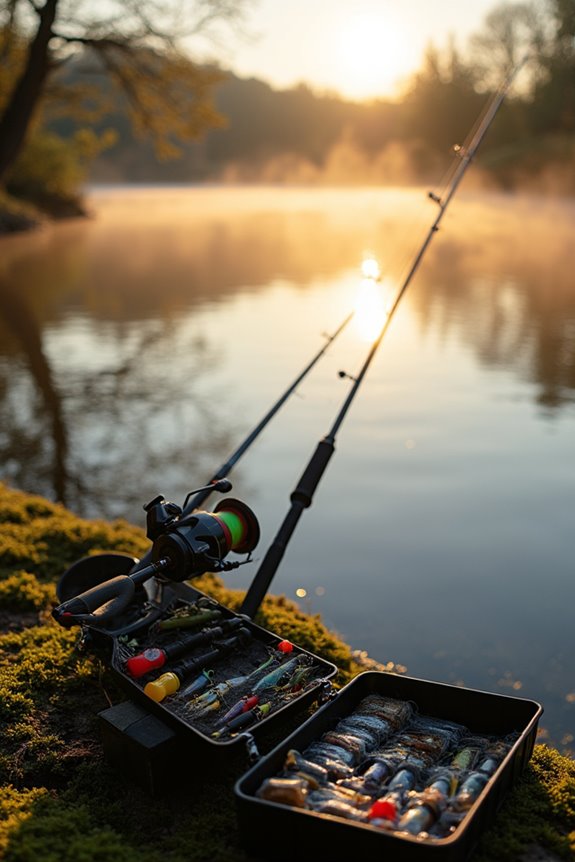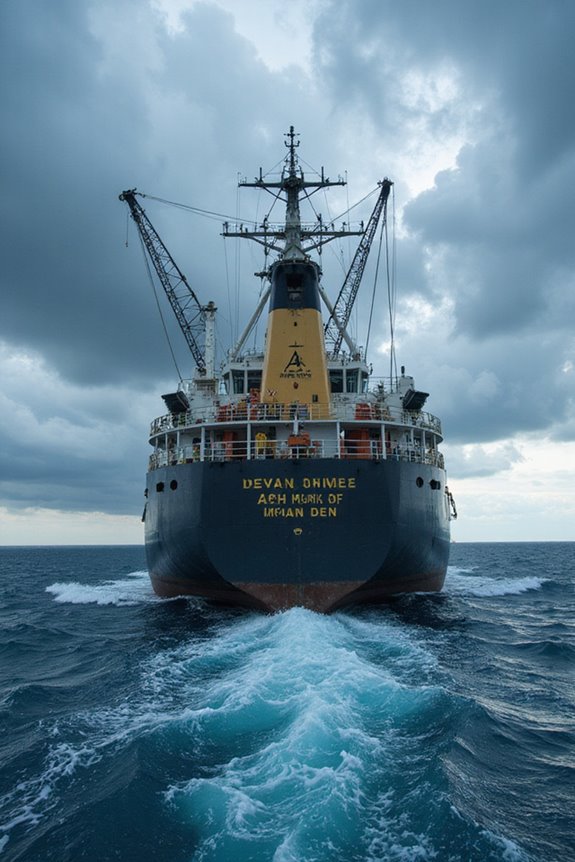The biggest fish ever caught was a Great White Shark weighing 2,664 pounds. Angler Alfred Dean hooked this impressive specimen off Ceduna, Australia, in 1959 using heavy-duty tackle, including a strong line and sturdy rod. Modern anglers should consider using powerful reels with high drag capacity and Bluetooth fish finders for a better chance in hotspots like coastal Australia. Exploring record-worthy catches can lead you to other fascinating species and unforgettable experiences in fishing.
Key Takeaways
- The heaviest fish ever caught is a Great White Shark weighing 2,664 pounds, caught by Alfred Dean in 1959 off Ceduna, Australia.
- The largest verified Great White Shark measured 1,208 kg (2,663 pounds) and was caught by the same angler in 1959.
- Other notable record fish include Tiger Sharks and Greenland Sharks, both exceeding 1,700 pounds.
- Largest freshwater fish records include the Mekong catfish at 645 pounds and a giant stingray at 661 pounds.
- The longest fish is the giant oarfish, exceeding 20 feet, while the largest fish overall is the whale shark, over 40 feet.
The Heaviest Fish Ever Caught
When it comes to the heaviest fish ever caught on rod and reel, the record holder is a great white shark weighing an astonishing 2,664 pounds, which was caught off Ceduna, Australia, in 1959 by angler Alfred Dean. This catch utilized heavy-duty fishing techniques, including strong line and a sturdy rod designed for big game fishing. The International Game Fish Association (IGFA) recognized this record after thorough verification, ensuring compliance with their strict guidelines. While larger great whites exist, Dean’s catch remains unparalleled in angling history. Modern anglers pursuing similar achievements might benefit from using Bluetooth fish finders to locate elusive deep-water species with greater precision. Anglers aiming for record catches should focus on suitable locations, understand shark behavior, and equip themselves with high-quality gear to maximize their chances of landing such massive fish.
Record Great White Shark Catches
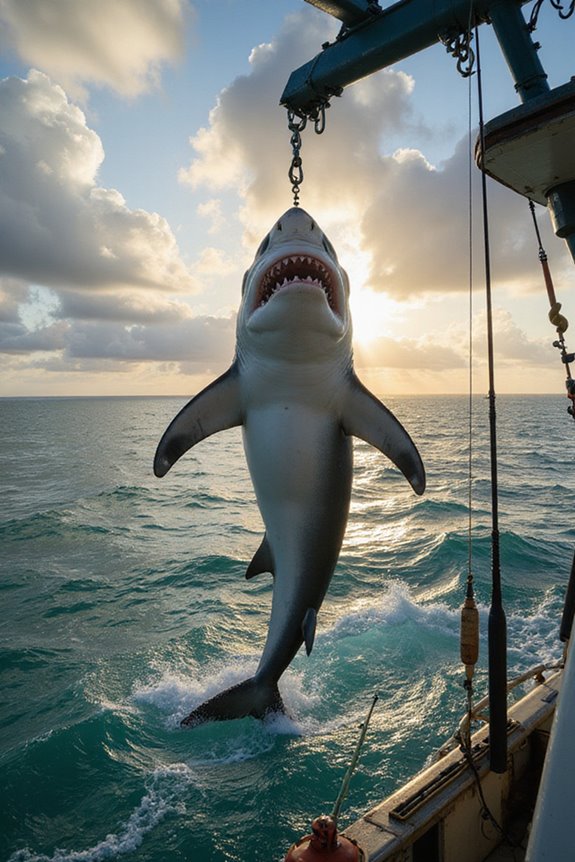
Several notable records exist for Great White sharks, showcasing both their size and the skill required to land these formidable creatures. The largest verified Great White, weighing 1,208 kg, was caught by Alf Dean in 1959 off Australia. I find it fascinating that the longest reliably measured Great White is about 6.1 meters, taken off Prince Edward Island in 1988. These catches highlight the importance of record verification, as earlier claims often faced scrutiny due to misidentification or measurement errors. When targeting large saltwater fish like Great Whites, a powerful reel with high drag capacity similar to the Penn Spinfisher VI is essential for control during the fight. If you’re targeting Great Whites, consider using heavy-duty gear, such as 80-130 lb test line, and conduct your fishing trips in known hotspots like Ledge Point or coastal Australia during peak seasons.
Notable Massive Fish Records
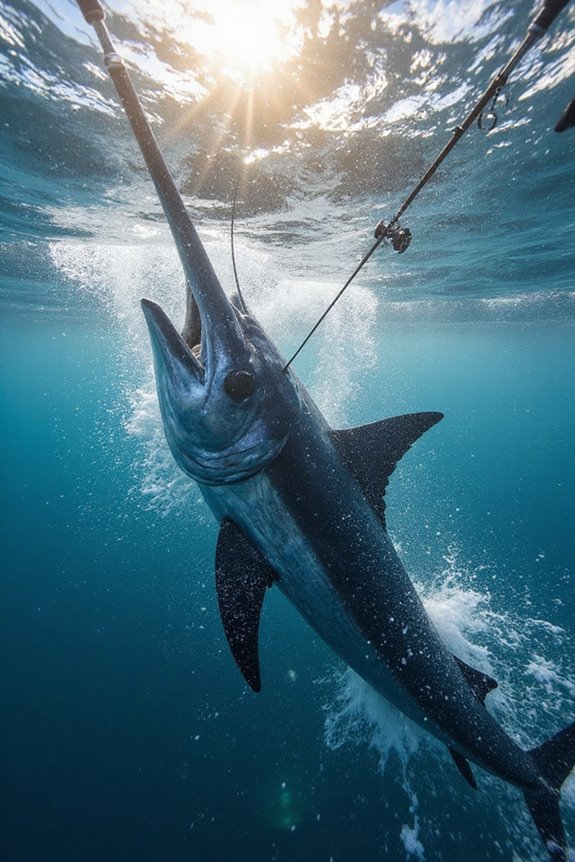
As we explore the domain of notable massive fish records, it’s clear that both saltwater and freshwater environments offer incredible opportunities for anglers seeking trophy catches. The Great White Shark, weighing 2,664 pounds, holds the top saltwater record, caught off Ceduna, Australia. Tiger Sharks and Greenland Sharks also impress with weights exceeding 1,700 pounds. Famous fishing locations like the Gulf of Mexico and Hawaii are renowned for massive marlin catches, with Black Marlin reaching 1,560 pounds. Anglers often use unusual fishing techniques, including heavy tackle and live bait, to land these giants. For tuna enthusiasts, the Atlantic Bluefin Tuna, at 1,496 pounds, is a prime target, showcasing the strength and endurance that make these fish legendary. Many professional anglers rely on life-like action lures with realistic patterns and holographic eyes to attract these record-breaking fish species.
Largest Freshwater Fish Records
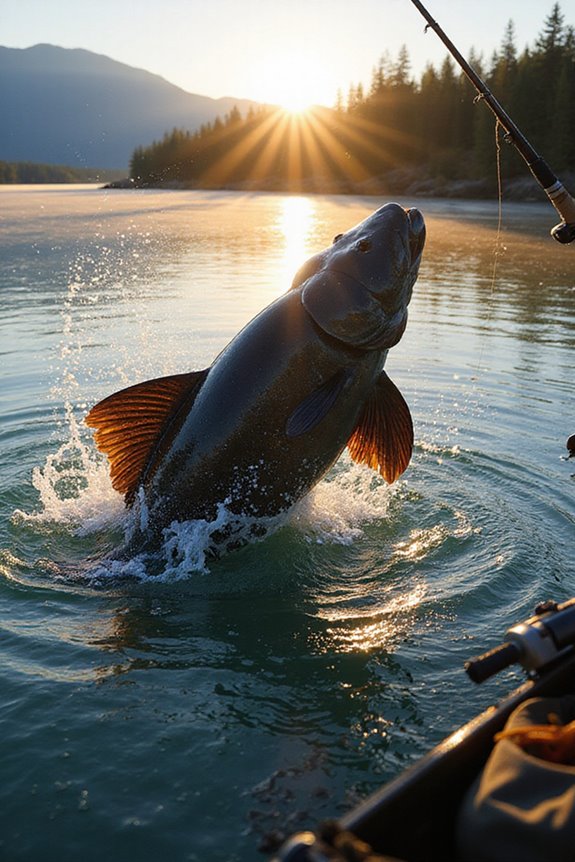
The domain of freshwater fishing offers impressive records, showcasing some of the largest fish species on the planet. The Mekong catfish, recognized as one of the largest, can weigh up to 645 pounds. Anglers often target these giants in the Mekong River using heavy-duty tackle, including 80-pound test line for durability. Another remarkable species is the giant stingray, which holds a record weight of 661 pounds, caught in Cambodia. To successfully catch these stingrays, fishermen use strong rods and large bait, often targeting spots near riverbeds where they feed on crustaceans. The Mekong River basin remains a prime location for these giants, drawing both local and international fishing enthusiasts enthusiastic to break records.
Largest Fish by Length and Size
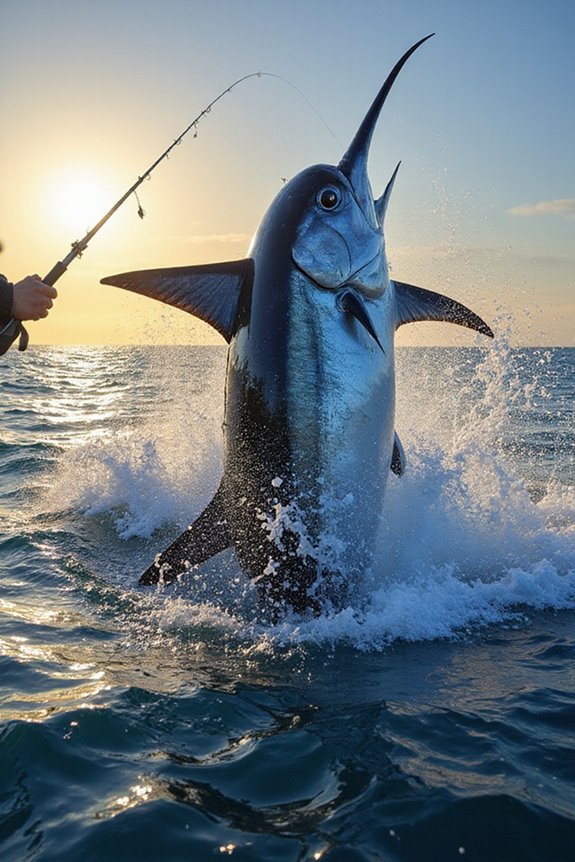
When discussing the largest fish by length and size, it’s essential to recognize that not all record-holding species are caught by anglers. The giant oarfish, for instance, is the longest existing bony fish, reaching lengths over 20 feet. While catching techniques vary, the whale shark, the largest fish overall, remains uncatchable for anglers due to its massive size exceeding 40 feet. These fish thrive in open oceans, often in deep water habitats. Anglers pursuing large billfish like the black marlin or swordfish typically use heavy-duty tackle and live bait, targeting offshore areas known for their presence. Understanding these fish habitats and behavior can enhance your chances of encountering remarkable specimens while respecting their size and ecological importance.
Historical and Exhibit Fish
Exploring the world of historical and exhibit fish reveals a fascinating intersection of angling legacy and scientific inquiry. I find the IGFA Fishing Hall of Fame particularly intriguing, showcasing life-size models of record catches and providing historical displays that highlight significant milestones in fishing. Notable examples include Alfred Glassell’s massive 1,560-pound black marlin, a true legend in the fishing community. The Smithsonian’s extensive fish collections also contribute to our understanding of marine biodiversity, with preserved specimens illustrating fish evolution. Interactive exhibits engage visitors, allowing them to compare human senses with fish and simulate fishing experiences. These educational opportunities emphasize exhibit significance, connecting past achievements with current scientific exploration in the aquatic world.
Equipment and Angling Conditions for Record Catches
Catching record-breaking fish requires not just skill but also the right equipment and understanding of angling conditions. Your tackle selection is essential; use monofilament or multifilament lines within the specified weight classes, making sure that the first 5 meters meets IGFA standards. For rods and reels, choose gear designed for the target species, guaranteeing drag systems can handle the line class. When it comes to fishing techniques, utilize appropriate baits or lures based on species and environmental factors. Always keep an eye on weather and water conditions, as they can greatly influence your success. Remember, ethical angling practices are critical; avoid illegal tactics and make sure your gear remains unaltered during the fight for a fair record attempt.
Frequently Asked Questions
What Are the Best Fishing Techniques for Catching Large Fish?
When I’m targeting large fish, I focus on effective catching techniques like observing their behavior and selecting the right bait. Larger baits tend to attract bigger catches, making my efforts more successful overall.
How Do Fish Weights Compare Across Different Species?
Did you know the whale shark can weigh up to 21.5 tons? When I look at species weight comparisons, it’s fascinating how different fish exhibit such varying weights despite similar lengths, showcasing nature’s diversity.
What Environmental Factors Influence Fish Size?
I’ve noticed that environmental factors like water temperature and food availability greatly influence fish size. Ideal temperatures boost growth rates, while ample, nutritious food guarantees fish reach their maximum potential. It’s fascinating how interconnected these elements are!
Are There Ethical Considerations in Catching Record Fish?
Ethical anglers like me prioritize conservation efforts. Catch and release practices not only protect fish populations but also promote sustainable fishing. We must respect nature, ensuring future generations enjoy our sport while safeguarding aquatic ecosystems.
How Do Fishing Regulations Vary by Region?
Fishing regulations really vary by region. I’ve noticed that fishing licenses often come with specific rules, like size limits and seasonal closures, tailored to local ecosystems and fish populations to guarantee sustainable fishing practices.

